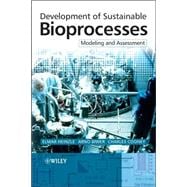
Note: Supplemental materials are not guaranteed with Rental or Used book purchases.
Purchase Benefits
Dr. Charles Cooney, MIT, USA
Both internationally-recognised experts in biochemical engineering and modeling
Dr Arno Biwer, MIT/ Universität des Saarlandes, Germany
| Preface | xiii | ||||
| Acknowledgments | xvii | ||||
| List of Contributors | xix | ||||
| PART I THEORETICAL INTRODUCTION | |||||
|
3 | ||||
|
3 | ||||
|
3 | ||||
|
6 | ||||
|
7 | ||||
|
11 | ||||
|
11 | ||||
|
11 | ||||
|
17 | ||||
|
20 | ||||
|
23 | ||||
|
23 | ||||
|
28 | ||||
|
29 | ||||
|
32 | ||||
|
33 | ||||
|
36 | ||||
|
40 | ||||
|
50 | ||||
|
52 | ||||
|
52 | ||||
|
53 | ||||
|
61 | ||||
|
62 | ||||
|
62 | ||||
|
63 | ||||
|
66 | ||||
|
66 | ||||
|
66 | ||||
|
71 | ||||
|
81 | ||||
|
81 | ||||
|
82 | ||||
|
83 | ||||
|
88 | ||||
|
94 | ||||
|
95 | ||||
|
95 | ||||
|
96 | ||||
|
99 | ||||
|
103 | ||||
|
105 | ||||
|
105 | ||||
|
107 | ||||
|
107 | ||||
|
108 | ||||
|
112 | ||||
| PART II BIOPROCESS CASE STUDIES | |||||
|
121 | ||||
|
125 | ||||
|
125 | ||||
|
125 | ||||
|
128 | ||||
|
130 | ||||
|
132 | ||||
|
134 | ||||
|
135 | ||||
|
137 | ||||
|
137 | ||||
|
137 | ||||
|
138 | ||||
|
138 | ||||
|
141 | ||||
|
142 | ||||
|
144 | ||||
|
145 | ||||
|
145 | ||||
|
155 | ||||
|
|||||
|
155 | ||||
|
156 | ||||
|
156 | ||||
|
159 | ||||
|
162 | ||||
|
163 | ||||
|
164 | ||||
|
169 | ||||
|
|||||
|
169 | ||||
|
170 | ||||
|
171 | ||||
|
172 | ||||
|
174 | ||||
|
174 | ||||
|
174 | ||||
|
175 | ||||
|
176 | ||||
|
177 | ||||
|
181 | ||||
|
181 | ||||
|
182 | ||||
|
182 | ||||
|
182 | ||||
|
184 | ||||
|
185 | ||||
|
186 | ||||
|
186 | ||||
|
189 | ||||
|
193 | ||||
|
193 | ||||
|
193 | ||||
|
193 | ||||
|
194 | ||||
|
196 | ||||
|
197 | ||||
|
197 | ||||
|
198 | ||||
|
198 | ||||
|
201 | ||||
|
206 | ||||
|
211 | ||||
|
|||||
|
211 | ||||
|
212 | ||||
|
212 | ||||
|
213 | ||||
|
214 | ||||
|
215 | ||||
|
215 | ||||
|
215 | ||||
|
218 | ||||
|
219 | ||||
|
221 | ||||
|
225 | ||||
|
|||||
|
225 | ||||
|
226 | ||||
|
226 | ||||
|
226 | ||||
|
227 | ||||
|
233 | ||||
|
234 | ||||
|
235 | ||||
|
237 | ||||
|
238 | ||||
|
241 | ||||
|
241 | ||||
|
241 | ||||
|
243 | ||||
|
245 | ||||
|
246 | ||||
|
247 | ||||
|
247 | ||||
|
248 | ||||
|
249 | ||||
|
255 | ||||
|
261 | ||||
|
|||||
|
261 | ||||
|
263 | ||||
|
263 | ||||
|
265 | ||||
|
268 | ||||
|
271 | ||||
|
|||||
|
271 | ||||
|
271 | ||||
|
272 | ||||
|
272 | ||||
|
275 | ||||
|
275 | ||||
|
276 | ||||
|
277 | ||||
|
278 | ||||
|
281 | ||||
|
282 | ||||
|
283 | ||||
| Index | 287 |
The New copy of this book will include any supplemental materials advertised. Please check the title of the book to determine if it should include any access cards, study guides, lab manuals, CDs, etc.
The Used, Rental and eBook copies of this book are not guaranteed to include any supplemental materials. Typically, only the book itself is included. This is true even if the title states it includes any access cards, study guides, lab manuals, CDs, etc.